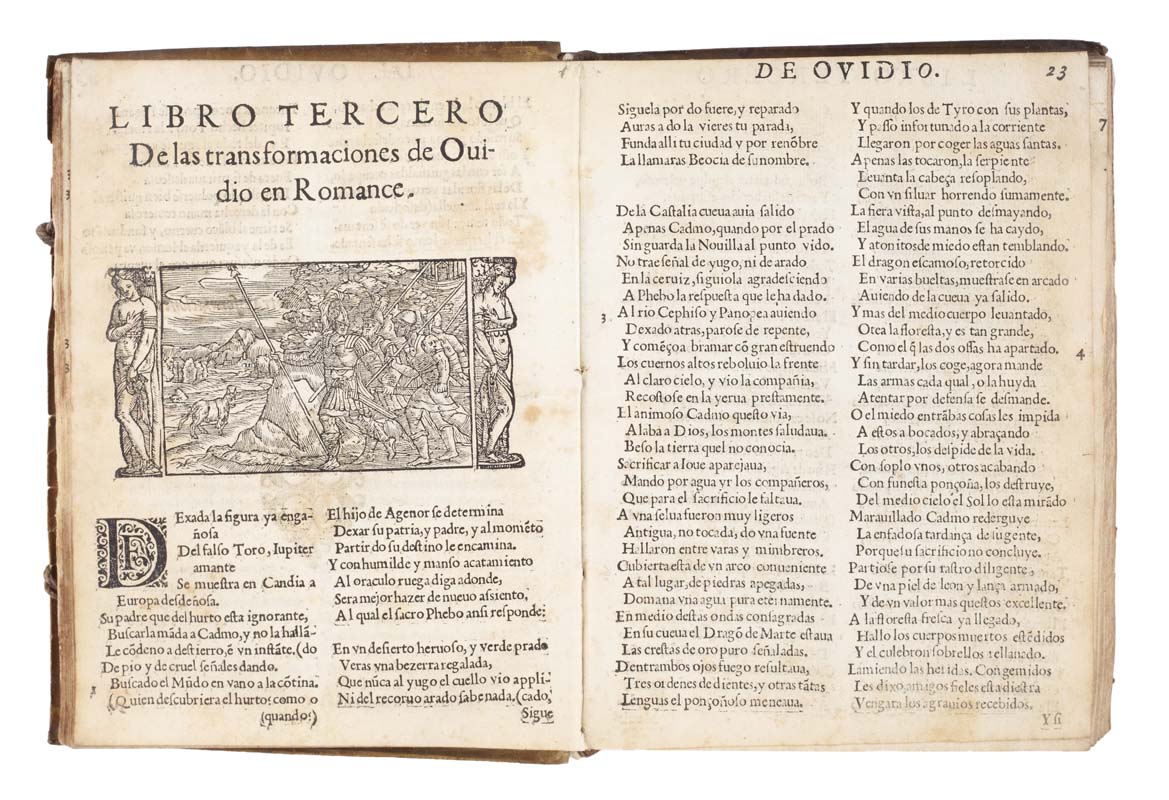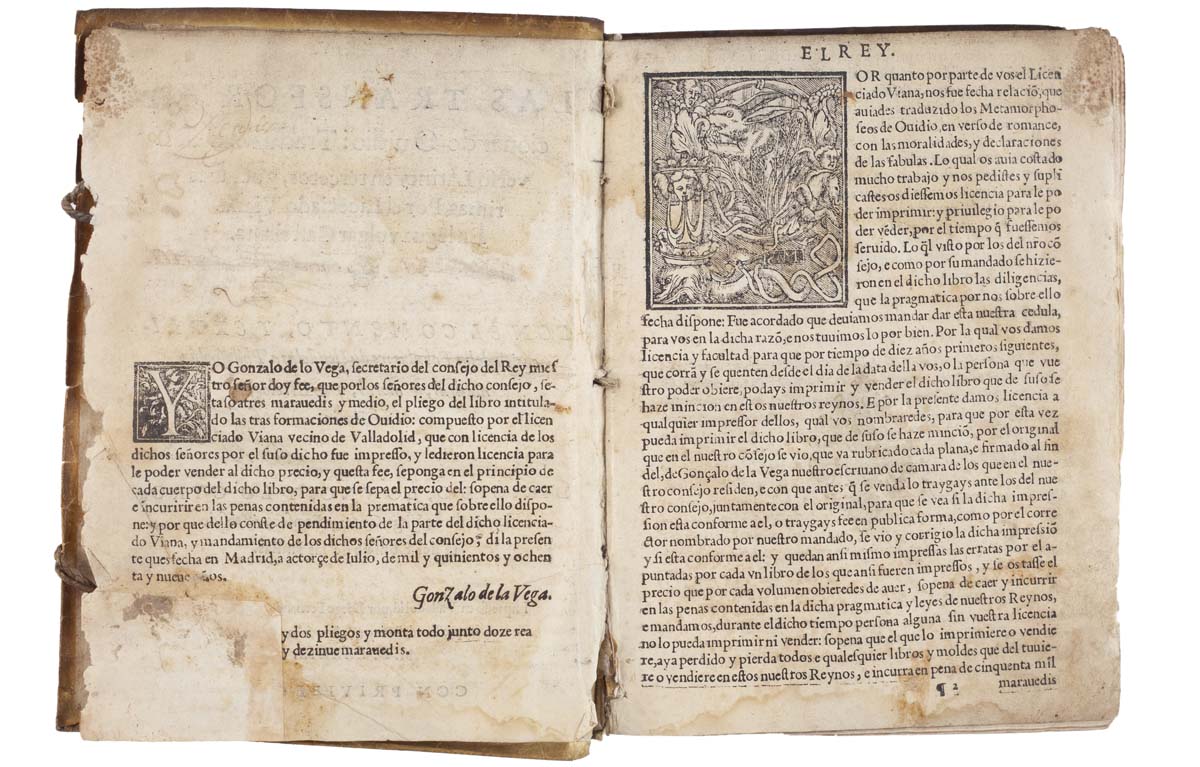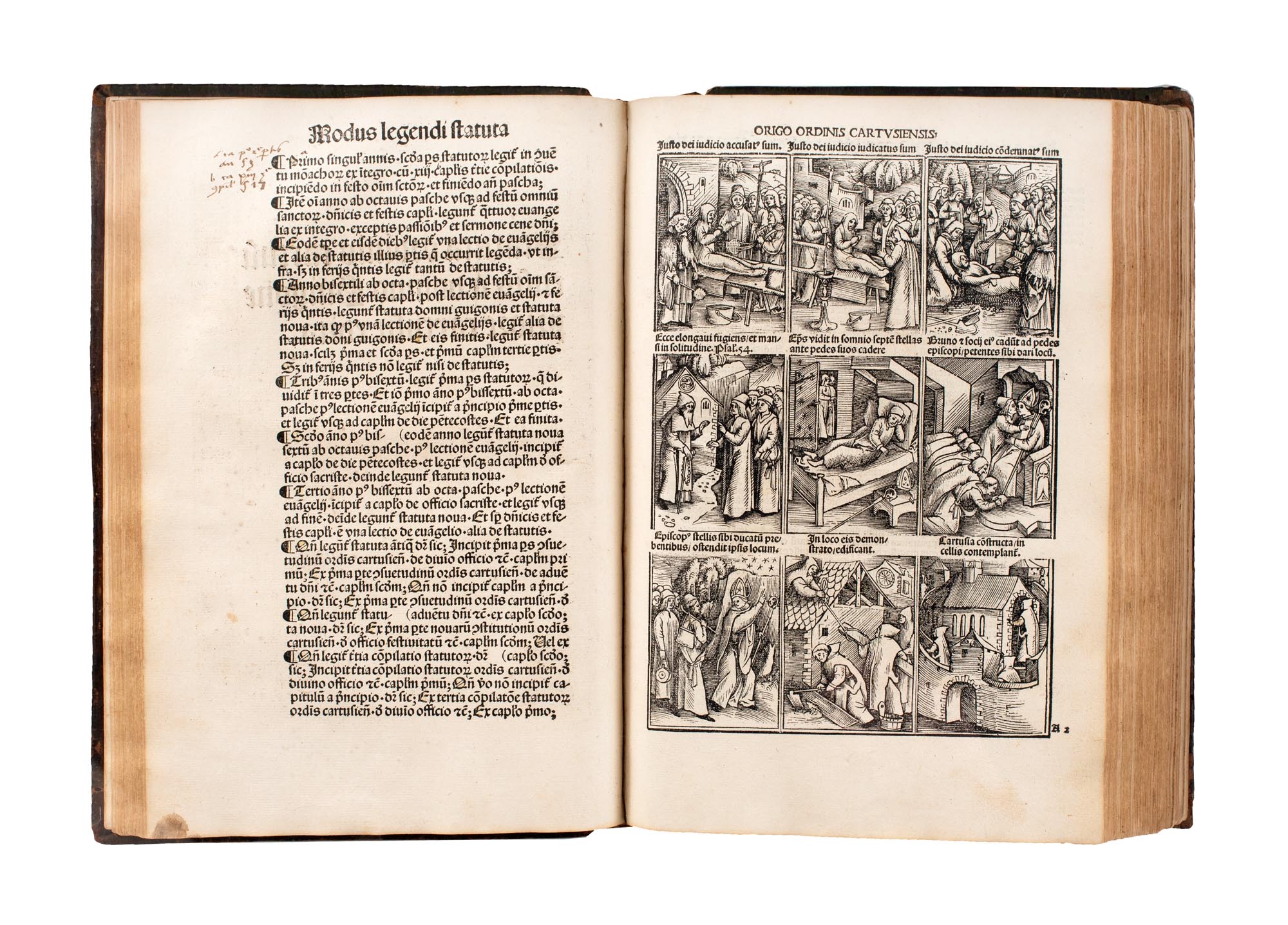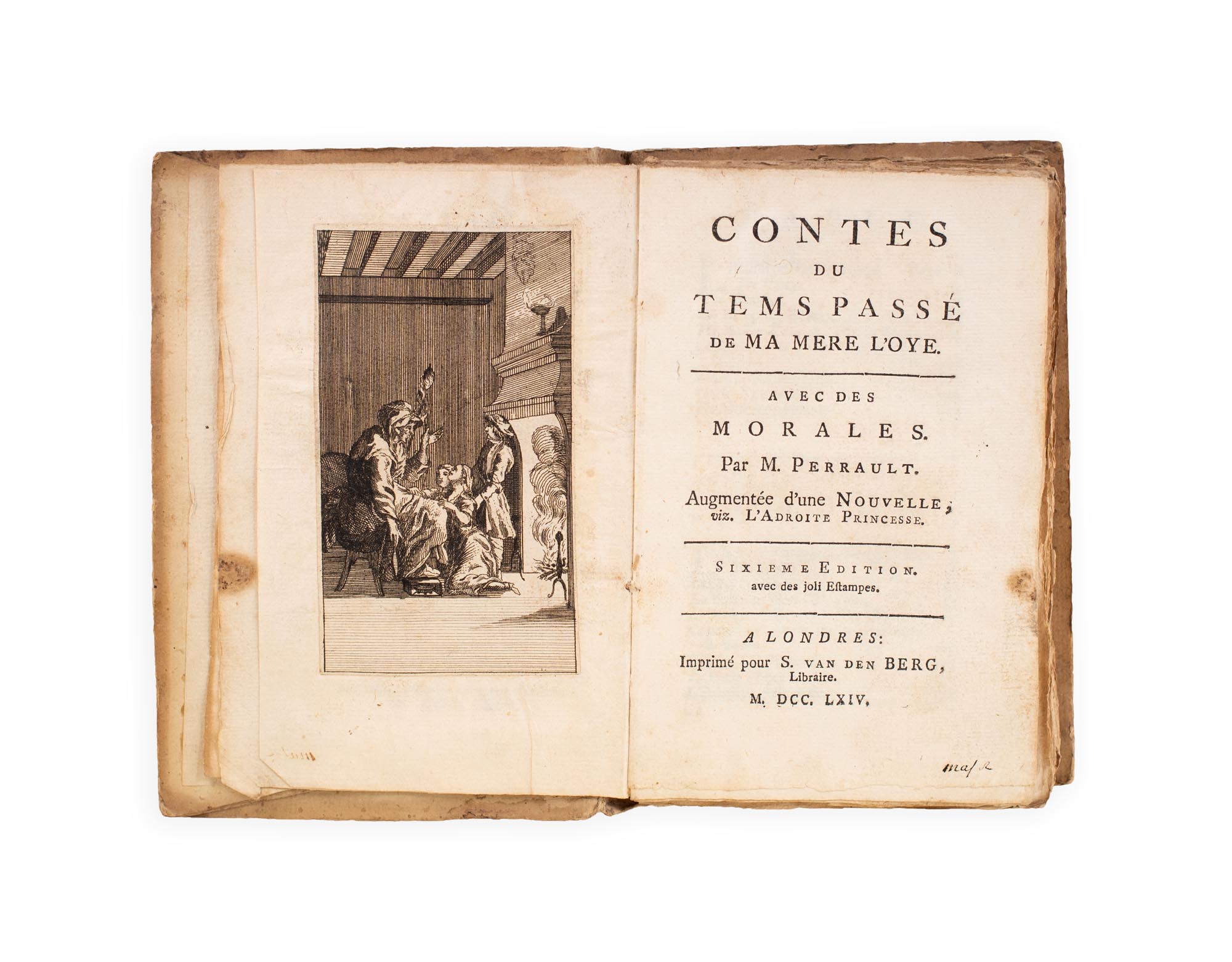


OVID IN THE AGE OF CERVANTES
OVIDIUS Naso, Publius, and Pedro Sánchez de VIANA (transl. and ed.).
Las transformaciones. [issued with:] Anotaciones sobre los quinze libros de las Transformaciones.
Valladolid, Diego Fernández de Córdoba, 1589.
4to, ff. [16], [2 (blank)], 179, [1]; 264, ‘295-314’ (i.e. 265-284), [4 (index)]; woodcut illustrations, one to each book, surrounded by cartouches, one 14-line woodcut initial and many 4-line woodcut initials, woodcut device on second title-page, running titles; title-page stained and chipped with some tears and lower outer corner torn off and repaired at an early stage, text-block trimmed close with a few headlines shaved, large ink stain on

Added to your basket:
Las transformaciones. [issued with:] Anotaciones sobre los quinze libros de las Transformaciones.
First edition, a copy of notable provenance, of perhaps the most successful early Spanish translation of Ovid’s Metamorphoses, by Pedro Sánchez de Viana (1545–1616), published along with his substantial commentary. In the age of Cervantes (another master of literary transformations), Ovid exerted wide and lasting influence on Spanish literature, uniquely able, among the Latin poets, to echo and clothe in myth and beauty the ambitions and anxieties of a generation of poets caught in a world of deep change. The re-elaboration of themes such as madness, desire, doubt, and self-knowledge in Cervantes and his contemporaries rely on Ovid’s imagery and language, and de Viana’s translation proved an important cultural transposition. Set out in hendecasyllables in alternate rhyme, the text itself is vivid and memorable. It is the commentary, however, which especially commands attention: sources for interpretation range from classical writers to Medieval scholastics, to more recent philologists including Hebrew and Spanish thinkers; but this already considerable feat is crowned by de Viana’s attention for literary emulation over mere exegesis, and by his wholly humanistic rejection of moralizing interpretations (which had been ubiquitous up until his generation) in favour of providing readers with tools to develop own views.
Palau 207496 and 207497; USTC 340434; see J. C. Parrack, ‘Mythography and the Artifice of Annotation: Sánchez de Viana’s Metamorphoses (and Ovid)’ in Ovid in the Age of Cervantes (2010, ed. De Armas), pp. 20-36).

